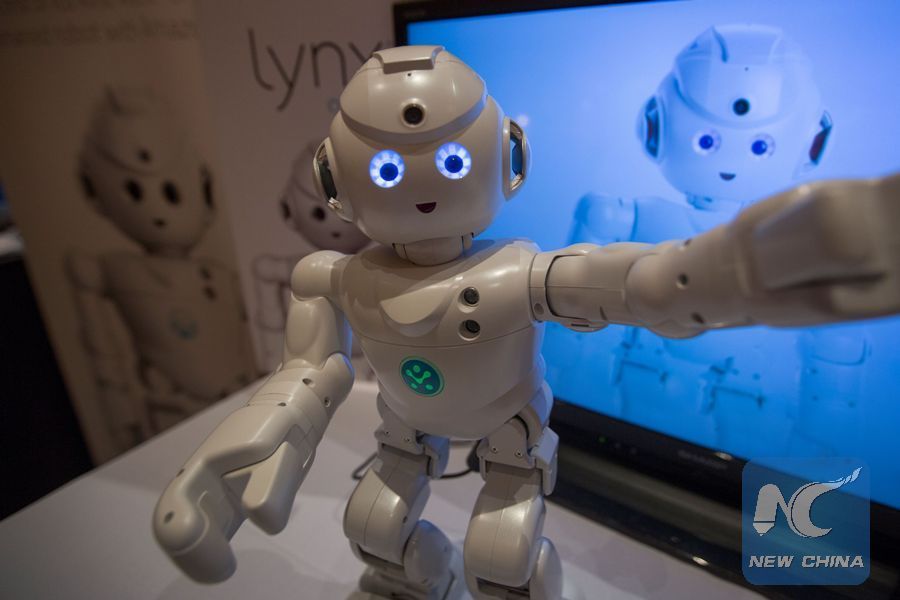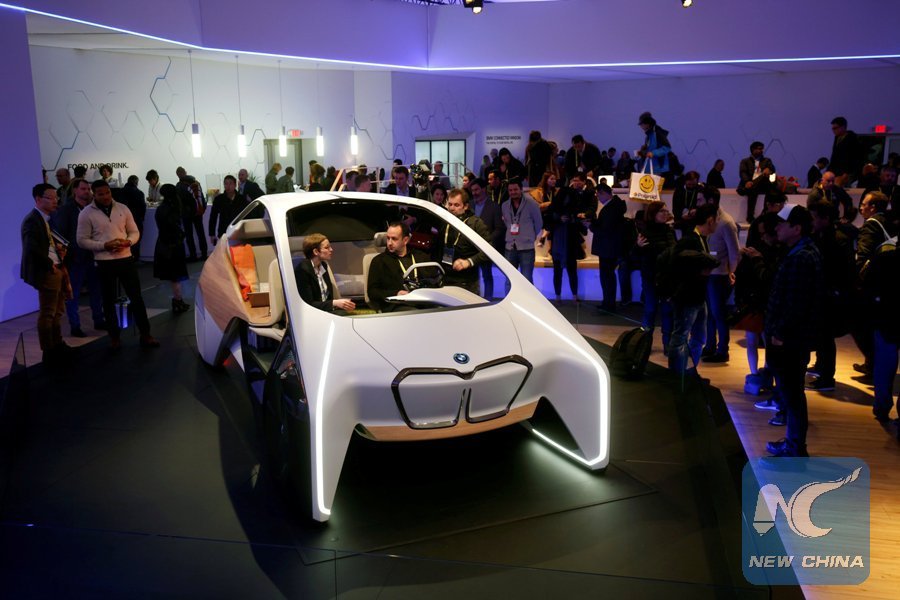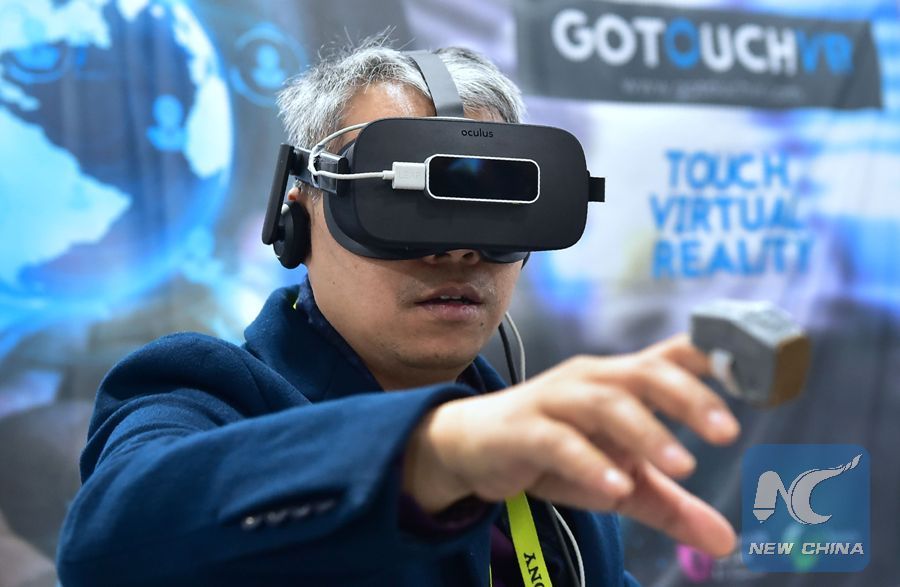
A Lynx robot toy by UBTECH Robotics dances at ShowStoppers during the 2017 Consumer Electronic Show (CES) in Las Vegas, Nevada on January 5, 2017. (AFP PHOTO/DAVID MCNEW)
by Xinhua Writer Zhang Chaoqun
LAS VEGAS, Jan. 9 (Xinhua) -- In the 50th year of the International Consumer Electronics Show (CES), new generation TV, autonomous driving, drones, robots, 3-D printing and virtual reality (VR) technology gave a glimpse of future life.
This year's CES held in Las Vegas between Thursday and Sunday attracted over 3,800 companies and 50,000 professionals from 150 countries and regions in the world.
In its more than 2.6 million net square feet (about 242,000 square meters) show space, about 165,000 attendees explored the current advanced technology development.
This year, artificial intelligence found its way into more products. Meanwhile, self-driving, education robots, 3-D printing and VR technology took the central stage at the show.

A BMW i Inside Future sculpture is shown during the 2017 CES in Las Vegas, Nevada January 6, 2017. The sculpture is used for car technology demonstrations. REUTERS/Steve Marcus
AUTONOMOUS, CLEANER DRIVING
Vehicle technology is making driving safer and drivers more connected, according to attendees representing new vehicle technologies and innovation at the show.
"This is a transformative time in automotive," said Patrick Little, Qualcomm's automotive senior vice president and general manager. "The pace of innovation is unprecedented."
The automotive industry is being driven by a desire to bring safety to the next level with connectivity, electrification and autonomous driving, said Little.
Little's idea was echoed by Carlos Ghosn, chairman and CEO of Nissan Motor Corp. "The destructive triangle of autonomous drive technology, electric vehicles, connected cars and services means we will see more changes in the next 10 years than we did in the last 50," he said.
"By 2030, 15 percent of new vehicles sold could be fully autonomous," he predicted.
"WALLPAPER TVs"
New generation TV products has always occupied large space of the show.
This year, LG unveiled two new products, 77-inch and 65-inch Signature-series OLED TVs with depths of only 2.57 mm and with magnetic wall brackets that eliminate the gap with the wall.
David VanderWaal, marketing head for LG Electronics USA, described this LG product as "wallpaper TV," looking like pictures hanging on a wall.
Another LG TV used most advanced visual and sound technology developed by Dolby Laboratories, transforming the TV experience both in terms of video and audio.
"By incorporating Dolby Vision and Dolby Atmos into our premium OLED TVs, the first TV of its kind, we are able to offer consumers amazing realism across both image and sound that is vivid, nuanced, and powerful," said Brian Kwon, president of LG Home Entertainment Co.

An attendee samples VR Touch from GoTouchVR, a wearable haptic ring creating the illusion of touching virtual objects, designed and available for a large variety of applications, is displayed at the 2017 Consumer Electronic Show (CES) in Las Vegas, Nevada, January 6, 2017. / AFP PHOTO / Frederic J. BROWN
SMARTER ROBOTS
Thanks to improved artificial intelligence, computer vision and sensing, robots are getting smarter and can better navigate and interact with humans and the environment around them.
Like the introduction of computers and cellphones, consumer robots and educational robots will transform and disrupt lifestyles everywhere.
Founded in 1996, Chinese educational robots company Abilix has become world-leading educational robots with more than 200 patented technologies. Abilix independently developed over 120 types of educational robots over the last 20 years.
Abilix robots are being used in more than 21,500 primary and secondary schools in 31 countries and regions. "By programming the robot, kids practiced their logical thinking ability and problem-solving ability," said Li Minghe, general manager of Abilix global educational market.
HEAVY CHINESE PRESENCE
More than 1,300 companies from the Chinese mainland were about to exhibit at CES 2017, accounting for one third of the exhibitors this year, according to the the U.S. Consumer Technology Association (CTA), the organizer of CES.
Gary Shapiro, president of CTA, said he was impressed by Chinese innovation in the consumer technology industry. China's importance in global consumer technology industry is not only reflected by its strong manufacturing, but also its increasing engagement in innovative new areas, Shapiro told Xinhua.
For the past 50 years, CES has been the launch pad for new innovation and technology that has improved the world.
Companies have introduced an estimated 700,000 new products at CES over these 50 years, including every major breakthrough technology product, said Shapiro. "The products and services unveiled at CES 2017 will touch nearly every single global industry."
According to the CTA, tech industry supports 15 million jobs and contributes 3.5 trillion U.S. dollars to the U.S. economy.

